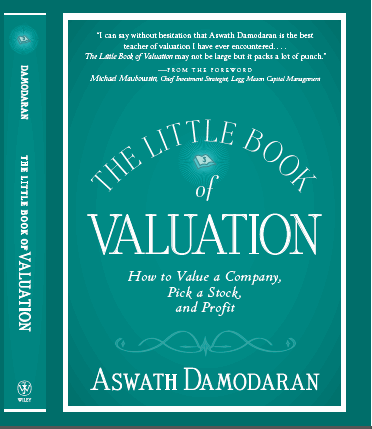 The
Little Book of Valuation
The
Little Book of Valuation There
are three reasons why a cash flow in the future is worth less than a similar
cash flow today.
1. Individuals prefer present consumption to
future consumption. People would have to be offered more in the future
to give up present consumption. If the preference for current consumption is
strong, individuals will have to be offered much more in terms of future
consumption to give up current consumption, a trade-off that is captured by a
high “real” rate of return or discount rate. Conversely, when the preference
for current consumption is weaker, individuals will settle for much less in
terms of future consumption and, by extension, a low real rate of return or
discount rate.
2. When there is monetary inflation, the value
of currency decreases over time. The greater the inflation, the greater
the difference in value between a nominal cash flow today and the same cash
flow in the future.
3. A promised cash flow might not be delivered
for a number of reasons: The promisor might default on the payment, the
promisee might not be around to receive payment, or
some other contingency might intervene to prevent the promised payment or to
reduce it. Any uncertainty (risk) associated with the cash flow in the future
reduces the value of the cash flow.
The process by which future cash flows are adjusted to reflect these factors is called discounting, and the magnitude of these factors is reflected in the discount rate. The discount rate can be viewed as a composite of the expected real return (reflecting consumption preferences in the aggregate over the investing population), the expected inflation rate (to capture the deterioration in the purchasing power of the cash flow), and the uncertainty associated with the cash flow.